What Is a “Brownfield”?
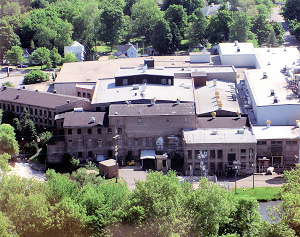 The United States Environmental Protection Agency (U.S. EPA) defines a “Brownfield” as real property, the expansion, redevelopment, or reuse of which may be complicated by the presence or potential presence of a hazardous substance, pollutant, or contaminant.
The United States Environmental Protection Agency (U.S. EPA) defines a “Brownfield” as real property, the expansion, redevelopment, or reuse of which may be complicated by the presence or potential presence of a hazardous substance, pollutant, or contaminant.
The State of Michigan defines a “Brownfield” site as a “facility” as defined by Part 201 of Natural Resources and Environmental Protection Act (NREPA) (contaminated at levels above generic residential use criteria). Properties that are adjacent and contiguous to “Brownfields” may also be considered “Brownfields”. The State of Michigan also identifies blighted and functionally obsolete sites as “Brownfields”:
Blighted
- Declared a public nuisance by local government
- Attractive nuisance to children
- Fire hazard or otherwise dangerous
- Utilities, heat, etc. disconnected so property is unfit for intended use
- Tax reverted property owned by a qualified unit of government
- Owned by a land bank fast track authority
- Contains substantial buried debris
Functionally Obsolete
- Unable to be used to adequately perform the function for which it was intended because of overcapacity, changes in technology, deficiencies or superadequacies in design, or relationship to surrounding properties (certified by Level 3 or 4 Assessor). Examples of potential Brownfields are foundries; automobile repair service centers; machine shops; dry cleaners; unlicensed dumps; and other sites where the use and storage of chemicals may have resulted in environmental impact at the sites.
How Do I Know If a Property Is a Brownfield?
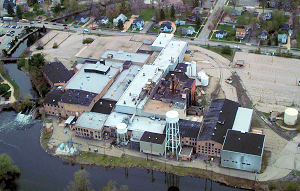 An interested party should contact the Plainwell City Manager’s office or the City of Plainwell’s Brownfield Redevelopment Authority (BRA) to see if information suggesting the site is a Brownfield is available. Information may also be available through the Michigan Department of Environmental Quality (MDEQ): www.michigan.gov/deq.
An interested party should contact the Plainwell City Manager’s office or the City of Plainwell’s Brownfield Redevelopment Authority (BRA) to see if information suggesting the site is a Brownfield is available. Information may also be available through the Michigan Department of Environmental Quality (MDEQ): www.michigan.gov/deq.
Brownfields may be created by: 1) closed or underutilized industrial and commercial facilities (e.g., economics, population changes or city development and planning changes); 2) unintended consequences of federal and state environmental regulations (e.g., status liability for contamination or stringent cleanup requirements); and 3) relative costs of development – old developed sites vs. new suburban land.
What Is a Brownfield Redevelopment Authority and What Role Does It Play?
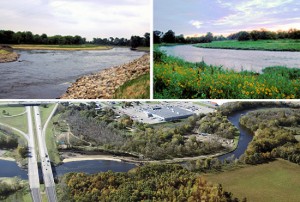 The Brownfield Redevelopment Financing Act (1996 PA 381, as amended by 2000 PA 145) allows a local unit of government to create a Brownfield Redevelopment Authority (BRA) to assist in redevelopment of Brownfields. BRAs develop and approve Brownfield plans, which identify eligible activities that will be conducted at the site, and determine if the community will support tax increment financing to capture state and local incremental property taxes.
The Brownfield Redevelopment Financing Act (1996 PA 381, as amended by 2000 PA 145) allows a local unit of government to create a Brownfield Redevelopment Authority (BRA) to assist in redevelopment of Brownfields. BRAs develop and approve Brownfield plans, which identify eligible activities that will be conducted at the site, and determine if the community will support tax increment financing to capture state and local incremental property taxes.
Tax increment financing allows BRAs to capture property taxes from the increased taxable value observed after redevelopment. These captured taxes can then be used to reimburse the costs of eligible environmental and non-environmental activities.
What Is the Brownfield Redevelopment Process?
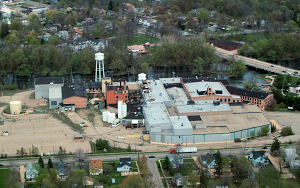 The Brownfield redevelopment process begins with a discussion with the City of Plainwell City Manager and/or the City of Plainwell BRA. From there, the interested party prepares a Brownfield Plan, which describes the project in detail and includes the information on the eligible activities to be performed at the site. The Brownfield Plan describes the taxes that are to be captured at each property, and indicates how the eligible activities will initially be funded.
The Brownfield redevelopment process begins with a discussion with the City of Plainwell City Manager and/or the City of Plainwell BRA. From there, the interested party prepares a Brownfield Plan, which describes the project in detail and includes the information on the eligible activities to be performed at the site. The Brownfield Plan describes the taxes that are to be captured at each property, and indicates how the eligible activities will initially be funded.
Once a Brownfield Plan is complete, the City of Plainwell BRA votes on whether to recommend it to the Plainwell City Council. The City Council then has the final vote on whether or not to approve the plan. If the interested party intends to capture state school taxes, an Act 381 Work Plan must also be prepared. If the interested party is seeking reimbursement of eligible environmental activities (e.g., contaminated soil removal, hazardous materials abatement), the Act 381 Work Plan must be submitted to and approved by the MDEQ. If the interested party is seeking reimbursement of eligible non-environmental activities (e.g., building demolition, infrastructure improvements) the Act 381 Work Plan must be submitted and approved by the Michigan Economic Development Corporation (MEDC)/Michigan Economic Growth Authority (MEGA). The City of Plainwell BRA will work with the developer through every step of the process to help ensure the project is a success.
Other Projects
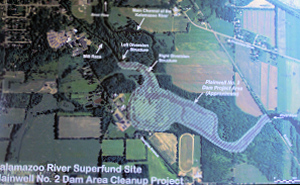 Other projects dedicated to improving Plainwell’s physical environment include the $40 million EPA project resulting in the removal of 4,700 pounds of PCB contaminated sediment from Plainwell’s stretch of the Kalamazoo River. For more information:
Other projects dedicated to improving Plainwell’s physical environment include the $40 million EPA project resulting in the removal of 4,700 pounds of PCB contaminated sediment from Plainwell’s stretch of the Kalamazoo River. For more information:
U.S. EPA Assessment Grant
 The United States Environmental Protection Agency (U.S. EPA) awarded the Cities of Allegan, Otsego and Plainwell a $200,000 Brownfield Assessment Grant for Hazardous Substances in 2008. The grant was awarded to the communities to help identify, characterize and prepare Brownfields for redevelopment. The cities used the grant to develop an inventory of Brownfields within each community, and then performed environmental assessments on priority sites to identify issues of concern and help prepare them for sale and/or redevelopment. The grant money was available to assist with site assessments for environmental due diligence and reuse planning at properties where a committed developer and redevelopment plan had been identified. The activities conducted under the U.S. EPA Brownfields Assessment Grant helped identify environmental concerns at many area Brownfields. This grant was an instrumental tool in attracting developers to Brownfield sites and ultimately transforming them into viable businesses. An example of a successful Brownfield redevelopment spurred by the U.S. EPA Brownfields Assessment Grant is summarized below.
The United States Environmental Protection Agency (U.S. EPA) awarded the Cities of Allegan, Otsego and Plainwell a $200,000 Brownfield Assessment Grant for Hazardous Substances in 2008. The grant was awarded to the communities to help identify, characterize and prepare Brownfields for redevelopment. The cities used the grant to develop an inventory of Brownfields within each community, and then performed environmental assessments on priority sites to identify issues of concern and help prepare them for sale and/or redevelopment. The grant money was available to assist with site assessments for environmental due diligence and reuse planning at properties where a committed developer and redevelopment plan had been identified. The activities conducted under the U.S. EPA Brownfields Assessment Grant helped identify environmental concerns at many area Brownfields. This grant was an instrumental tool in attracting developers to Brownfield sites and ultimately transforming them into viable businesses. An example of a successful Brownfield redevelopment spurred by the U.S. EPA Brownfields Assessment Grant is summarized below.
Plainwell Success: 712 East Bridge Street
 The Property consisted of approximately 0.7 acres of land developed with one irregularly shaped commercial building, one u-shaped former storage building, gravel and concrete parking areas, and a grass and grass-covered courtyard area. The Property was developed with a fruit evaporator and some lumber storage by 1892, and by 1904, the Property was developed with a lumber and coal storage yard. The Property continued to be used as a lumber and coal storage yard until sometime between 1955 and 1963, when coal storage operations ceased. The Property continued to be operated as a lumber storage yard until 2001 when the Property was vacated.
The Property consisted of approximately 0.7 acres of land developed with one irregularly shaped commercial building, one u-shaped former storage building, gravel and concrete parking areas, and a grass and grass-covered courtyard area. The Property was developed with a fruit evaporator and some lumber storage by 1892, and by 1904, the Property was developed with a lumber and coal storage yard. The Property continued to be used as a lumber and coal storage yard until sometime between 1955 and 1963, when coal storage operations ceased. The Property continued to be operated as a lumber storage yard until 2001 when the Property was vacated.
In the case of this specific property in Plainwell, a Phase I Environmental Site Assessment (ESA), a Hazardous Materials Building Assessment, a Phase II ESA, a Baseline Environmental Assessment (BEA) and a Due Care Plan were completed, which was identified as a Brownfield site after housing different uses over the course of more than one hundred years, including a Fruit Evaporator, Lumber Yard, and Landscaping Company. Vacant for over five years from 2002 through 2007, the Property was appealing to business entrepreneur, Mr. Dan Klein, of Paragon Energy Systems who was interested in potentially relocating his Pellet Stove Manufacturing business from Kalamazoo Township to 712 E. Bridge Street in Plainwell. However, before doing so, Mr. Klein sought information about the Property’s current environmental conditions and potential for redevelopment. The activities conducted as part of the U.S. EPA Brownfields Assessment Grant for Hazardous Substances
alleviated many of the unknowns associated with the Property’s environmental conditions. This grant was an instrumental tool in attracting a developer to a Brownfield site and ultimately transforming it into the viable business it is today. Mr. Klein officially celebrated the opening of his new business, The Energy Mill, at 712 E. Bridge in September 2010.
The Following Links Provide Information About Brownfield Redevelopment in Michigan
- Contact: Erik Wilson, Plainwell City Manager
- Contact: Brownfields (BRA)
- PowerPoint Presentation for BRA Operations, December 2009
- DEQ Updates: State of Michigan, Department of Environmental Quality
- MDEQ Brownfield Authorities website: This page provides information on redevelopment tools available to Brownfield authorities such as tax increment financing, a list of established Brownfield authorities and local contact information, and links to the updated Brownfield legislation.
- MEDC website: Michigan Econcomic Development Corporation
- Act 381 of 1996: AN ACT to authorize municipalities to create a brownfield redevelopment authority to facilitate the implementation of brownfield plans; to create brownfield redevelopment zones; to promote the revitalization, redevelopment, and reuse of certain property, including, but not limited to, tax reverted, blighted, or functionally obsolete property; to prescribe the powers and duties of brownfield redevelopment authorities; to permit the issuance of bonds and other evidences of indebtedness by an authority; to authorize the acquisition and disposal of certain property; to authorize certain funds; to prescribe certain powers and duties of certain state officers and agencies; and to authorize and permit the use of certain tax increment financing.
- Act 381 Work Plan Instructions:
- 2010 MEDC Brownfield Program Guidelines: (Issue Date 12/30/2009)
- Eligible MEGA Non-Environmental Activities Guidance: (Issue Date 12/30/2009)
- EPA Brownfield
- MDEQ Land Redevelopment